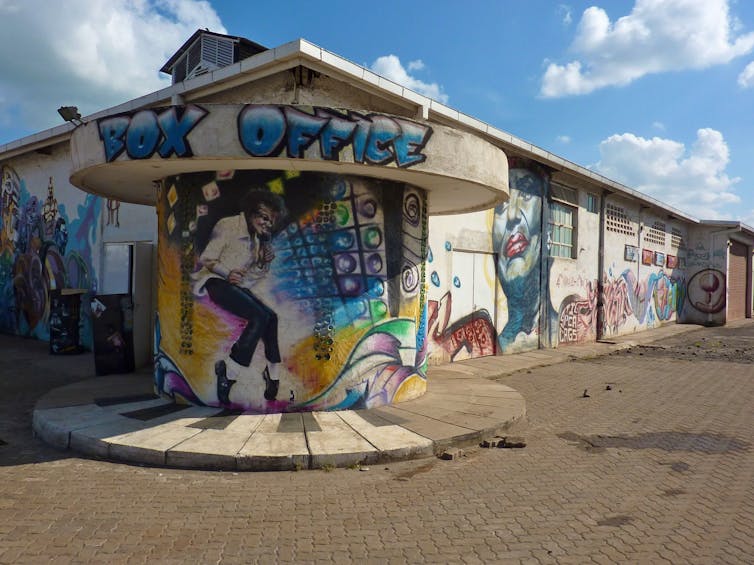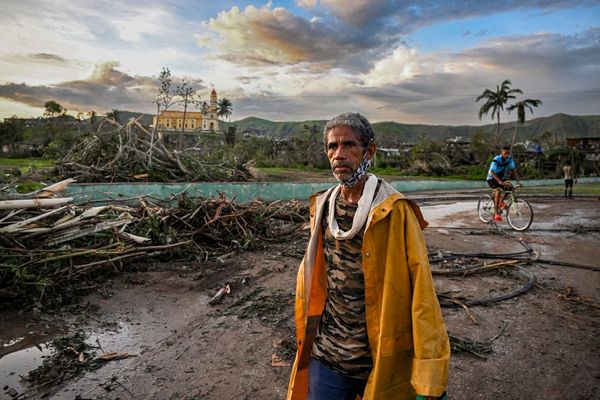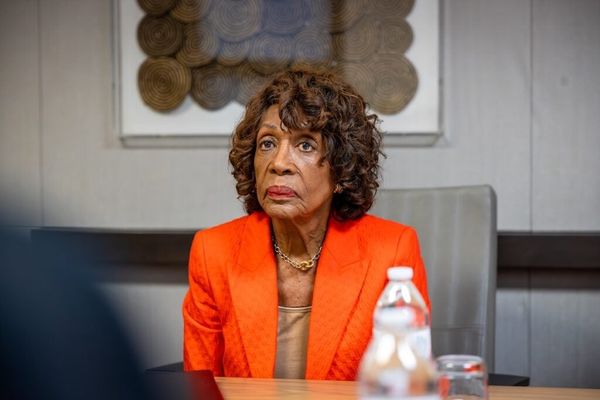Independent art spaces are collectives of artists (and others) who club together to set up a communal space – often in former industrial sites and more affordable parts of the city – to further their practice. These spaces are DIY art institutions, if you like, that operate largely under the radar. In art world lingo, “offspaces”.
Designed for purpose over profit, they encourage experimental work and creative risk-taking. They also favour art in public space, which provides an intriguing lens on the city.
My Africa-wide research took me to five such spaces, each at least 10 years old, so that I could learn their secret sauce of sustainability. I found it’s largely about shapeshifting, a capacity for constant reinvention. The key ingredient is artistic thinking, made up of five key principles highlighted in the examples below.
Read more: Koyo Kouoh – tribute to a curator who fiercely promoted African art
Offspaces are found everywhere but have notably grown across Africa over the past couple of decades, along with fast-changing cities and a resurgent art scene. One big picture point is crucial, and that’s about urbanisation. Globally, more and more people are moving to cities and most of them are young – by 2050, one in three young people in the world will be of African origin and the continent will be largely urban.
There can be a lack of imagination about what all this means and that’s where artists come in. They offer new ideas to help build the world we want to live in, rather than reinforce the one we already have.
Offspaces in Africa have to navigate prevailing uncertainty, which is a daily reality for most people living in cities. In response, artists band together to build their own pseudo institutions, bit by bit. These self-made pathways offer useful navigational tactics for others – or “panya routes”, as Kenyans call the trails that motorbike taxis invent.
The spaces I visited were all moving away from reliance on foreign donor funding (given little or no state support) towards a hybrid model that blends with local philanthropy, collaborative economies and self-generated income schemes. They also want to own their own land and hold assets so that they can think about the future.
1. The GoDown Arts Centre – Nairobi, Kenya

The GoDown Arts Centre was established in 2003. Previously a large compound of repurposed warehouses (“godowns”) in Nairobi’s industrial area, right now it’s a construction site as it morphs into an iconic cultural hub. GoDown 2.0 is a multipurpose vision that works at different scales, like a fractal. There will be a large, welcoming facade leading into a semi-public section for music and dance, with artist studios at the heart. Plus galleries, library, museum, auditorium, offices, hotel, a restaurant, conference facilities and parking.
Read more: Kenyan artists reflect Gen Z hopes and frustrations in new exhibition
Its rebuild is a great example of how artists create public space: in phases. It follows a radical “design-with-people” approach, starting with years of input from all directions to reconsider the building and its relationship to the city.
This ground-up ethos of horizontality, the first key principle, also shapes its signature event, an annual public arts festival called Nai Ni Who? (Who is Nairobi?). Local residents are the curators, and the everyday city is the artwork. Participants are taken around neighbourhoods on foot to experience the good, the bad, and the possibilities. These grounded insights also inform ongoing engagements GoDown has with policymakers about the shape of a future Nairobi.
2. ANO Institute – Accra, Ghana
ANO, established in 2002, repurposed a former workshop for car repairs into a gallery, after starting life in a public park. On the other side of the road, opposite the gallery, stood its office, residency space and growing library.
Most intriguingly, a striking rectilinear structure was positioned alongside. This Mobile Museum mimics the trading kiosks that line every street. Many are also shapeshifters: kindergarten by day, church by night, for example.
ANO’s empty museum, collapsible and see-through, went on a countrywide adventure in 2018 and 2019, asking people to imagine its contents, and later revisited with the results. It signalled a larger and ongoing effort, Future Museum, to find a more relevant exhibition form that’s alive to the fluid way culture is threaded here into everyday life.
ANO demonstrates the second principle of performativity – that is, not only saying things with art but doing things too. More recently, it rebuilt on a new site in central Accra, designed by 87-year-old Ophelia Akiwumi, entirely from raffia palm in a focus on indigenous knowledge systems.
3. Townhouse Gallery – Cairo, Egypt
I visited Townhouse just after it reclaimed its inner-city premises following a partial physical collapse. But this turned out to be a false restart. It closed for good not long after, citing a complex brew of factors that ended 21 years of various battles and resurrections. That it survived so long – from 1998 until 2019 – is remarkable for an offspace.
Part of the reason was its solidarity networks, including with neighbourhood communities – mostly mechanic shops and other artisanal trades who even helped Townhouse rebuild. In its heyday, Townhouse comprised an art gallery, library, theatre and performance venue, and notably hatched other spaces.
The latest rose like a phoenix from its ashes – Access Art Space, which reanimates the same physical space with visual art exhibitions. The legacy of Townhouse is the third principle of elasticity – responding nimbly to constant flux but also being able to refuse impossible conditions with “the right no” (a necessary response in certain situations).
4. ZOMA Museum - Addis Ababa, Ethiopia
ZOMA Museum has also lived many lives. Starting small, its roots were in a three-day public arts festival called Giziawi #1 (Temporary). It comprised performances and exhibitions across the city but focused on Meskel Square, a key public space.
Zoma Contemporary Art Centre grew out of that in 2002, followed in 2019 by Zoma Museum when its co-founders bought a plot of polluted land. Its rehabilitation into an ecological haven has become a case study in sustainable architecture.
Zoma is built by local artisans from mud and straw using indigenous technologies going back centuries. Yet its elegant buildings look futuristic. Zoma is all about the fourth principle of convergence – the past, present and future all happening at once. It’s also about doing multiple things, like running Zoma School, an inherited kindergarten. The land is part of the curriculum.
Just a year after it opened, Zoma spawned yet another life, an offshoot in a newly opened park blending nature with culture and recreation.
5. Nafasi Art Space - Dar es Salaam, Tanzania
Nafasi is Swahili for opportunity or chance, which fittingly describes the workings of Nafasi Art Space, established in 2008 – that is, second chance. This fifth and final principle of artistic thinking means giving materials, people and situations another go.
A good example of this is Nafasi’s new art school, built using repurposed shipping containers, like the rest of its premises – artist studios, a spacious gallery and performance arena. In the 2022 academy cohort, a general practice lawyer and an accountant were learning alongside artists, with a biologist at the helm.
Nafasi Art Academy cites the city’s biggest local market, Kariakoo, as design reference, particularly its distinctive elevated canopy and swirling stairwell. The curriculum also takes local context as a starting point, structured in themes to answer community-led questions. Its key function, like all the other offspaces, is storytelling. And the story it tells best is about institution-building as art.
The research behind this article was supported by the South African Research Chair in Urban Policy at UCT’s African Centre for Cities, where the author was previously affiliated.
This article was originally published on The Conversation. Read the original article.







